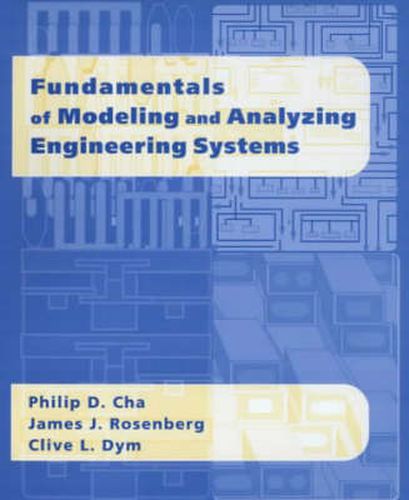Readings Newsletter
Become a Readings Member to make your shopping experience even easier.
Sign in or sign up for free!
You’re not far away from qualifying for FREE standard shipping within Australia
You’ve qualified for FREE standard shipping within Australia
The cart is loading…






System modeling and analysis is a standard activity in every engineering discipline. This text offers a broad-based introduction to engineering systems, incorporating material from mechanical, electrical, aerospace, and chemical engineering. The overall theme that distinguishes the text from others is its unified treatment of disparate physical systems, emphasizing similarities in both the modeling and behaviour of lumped-element systems. Linear graph theory provides the framework for modeling engineering systems as lumped elements. The analysis of system dynamics that follows is organized by behavioral characteristics rather than by engineering subdisciplines. Next, the Laplace transform is introduced as a tool for understanding frequency response. The final chapter covers feedback systems. Every chapter includes a wide variety of examples, as well as exercise problems, drawn from real-world mechanical, electrical, hydraulic, chemical, and thermal systems. Aimed at second and third year undergraduates, this introductory text offers a unified entry to the multidisciplinary world of engineering.
$9.00 standard shipping within Australia
FREE standard shipping within Australia for orders over $100.00
Express & International shipping calculated at checkout
System modeling and analysis is a standard activity in every engineering discipline. This text offers a broad-based introduction to engineering systems, incorporating material from mechanical, electrical, aerospace, and chemical engineering. The overall theme that distinguishes the text from others is its unified treatment of disparate physical systems, emphasizing similarities in both the modeling and behaviour of lumped-element systems. Linear graph theory provides the framework for modeling engineering systems as lumped elements. The analysis of system dynamics that follows is organized by behavioral characteristics rather than by engineering subdisciplines. Next, the Laplace transform is introduced as a tool for understanding frequency response. The final chapter covers feedback systems. Every chapter includes a wide variety of examples, as well as exercise problems, drawn from real-world mechanical, electrical, hydraulic, chemical, and thermal systems. Aimed at second and third year undergraduates, this introductory text offers a unified entry to the multidisciplinary world of engineering.